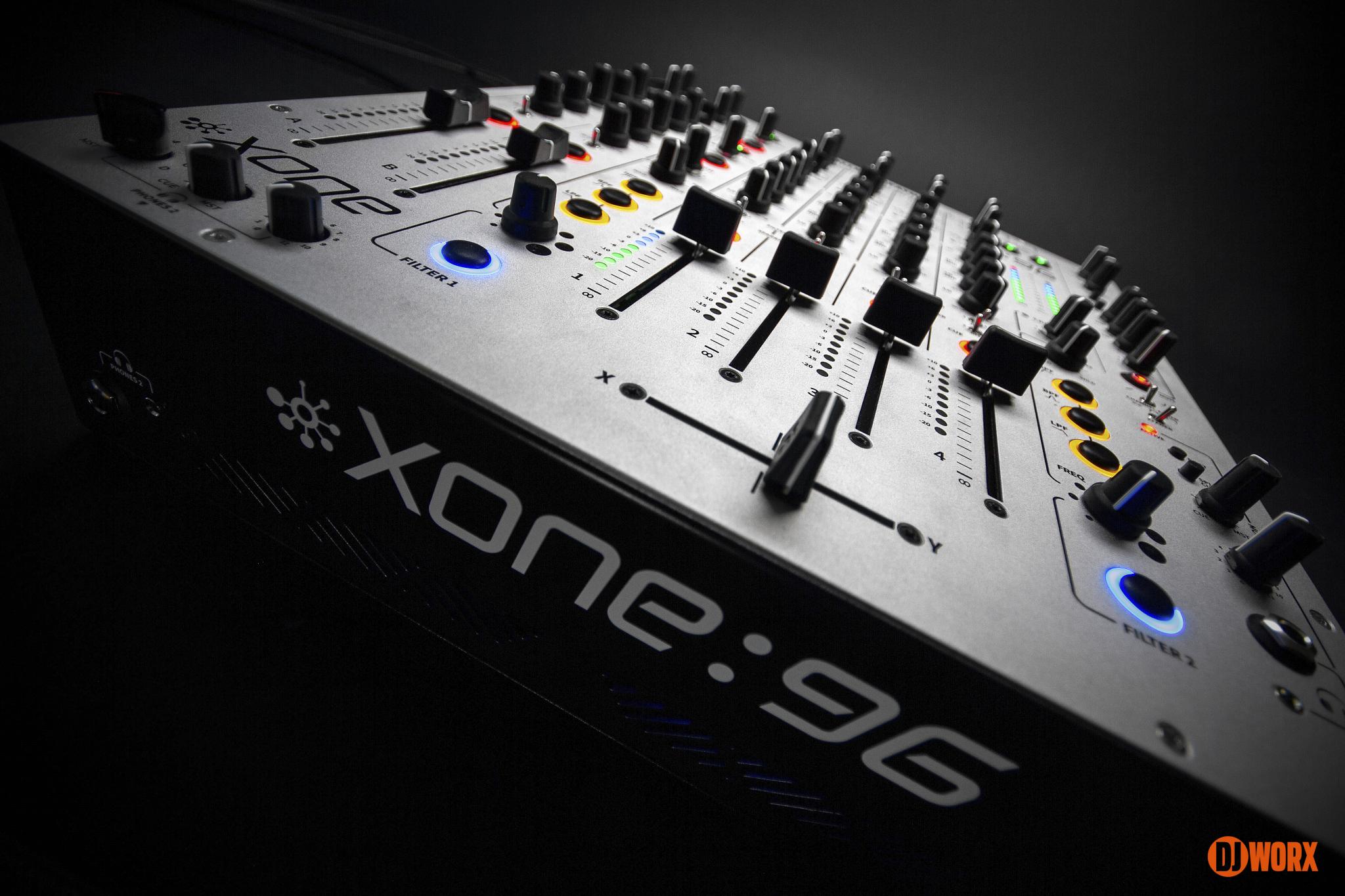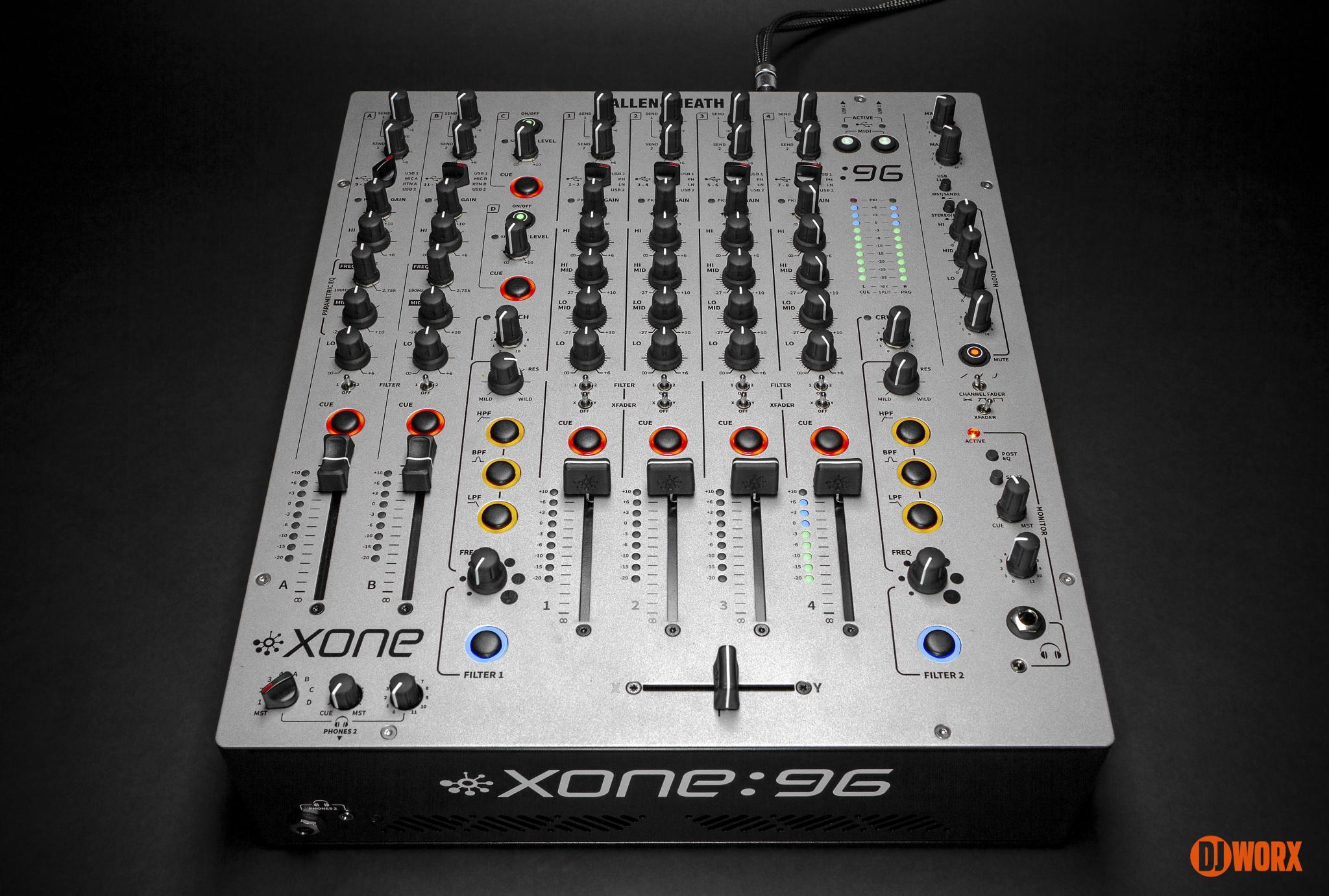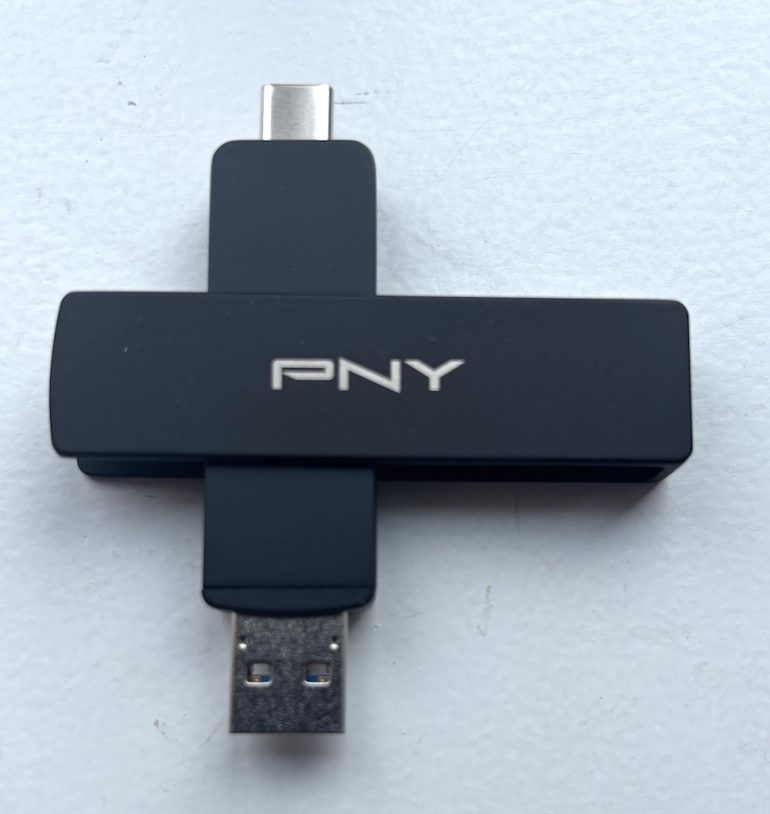UPDATE: Dan commented about the running temperature of the 96, and as is our way, we offer a right to reply. See here for Allen & Heath’s excellent explanation.
IMPORTANT NOTE: This is a production sample of the new Allen & Heath Xone:96 analogue DJ mixer, which I had the opportunity to play with all too briefly, so bear that in mind while reading through my experience. Things can still change before they hit the shops, including some minor hardware tweaks.
INTRODUCTION
There are some perks to this job. The opportunity to play with brand new gear, before pretty much everyone in the world, is certainly one of them. And I got to have a week with one of only around a dozen Allen & Heath Xone:96 club mixers currently in existence. The others are touring with the likes of Maceo Plex, Adam Beyer, and other dance music royalty, getting put through their paces.
So, first lets cover the inevitable elephant in the room: How does it compare to the current Xone:92? The most important thing to remember is that the Xone:96 is meant as a further step forward, building on what the 92 created. Learning from mistakes. Modernising. Future-proofing, to an extent. Fans of 92 will feel very at home, both with muscle memory and functionality.
While there is always going to be the unavoidable comparison with the 92, it’s important to look at PX5 as well, as there are a lot of design cues that made it into the Xone:96. Most of these are just modernised industrial design, such as the angled grille cutouts, or the rounded corners (the last one is particularly functional, as earlier mixers could have sharp corners which catch skin and clothes that get too close if the mixer hasn’t seen the best treatment). There’s also the obvious addition of a digital audio interface, which accompanies the analogue signal path (see: Xone:PX5 – Analogue Soul).
Another obvious design cue from its legacy is taken from the original silver coloured faceplates of the early 62s, 42s, 32s, and 92s. While the 96 does have a similar silver finish as homage to its lineage, the finish of the paint and materials is so much brighter, and looks much higher quality than the old mixers (I own a Xone:62 that was first sold in 2003). Materials-wise, it’s very similar to the PX5.
Oh, you want to know about the filter?
Despite the legendary lush sound, the 92 (and most of the Xone family) has a problem with audible pops while engaging the filters. This is due to the way the analogue crossover circuitry is designed to switch to the filter’s components. In their announcement materials, Allen & Heath stated the system had been reworked, to reduce the problem. Well, I gave it a good go, absolutely rinsing both the filter button, and the filter select switch, both during normal music, and with a quieter longer note playing, and could not get anything from it. There’s no sign of filter pop with either filter select, or on/off.
The filters also have a new ‘crunch’ feature, which adds some filthy distortion to your filter. This can also be added with the filter set to dry, though is much more subtle. I did find that while using it on the filter, it boosted the sound a lot more than I’d expect. It feels like it needs to be pulled back a bit to really make it an integral feature for 96 owners. It’s an awesome addition to the mixer’s arsenal, though.
Speaking of the filters — there’s now select switches on both the AUX channels, along with proper LED level meters, and a new 3-band parametric EQ instead of the old 4-band. If you’re familiar with the PLAYdifferently MODEL 1 layout, you’ll know what it does. In reality, it’s something that takes a bit of practice to get to grips with, being so alien to DJs used to the standard 3-band EQ on most club mixers. All these extra tools help make the AUX channels so much more powerful for effects RETURN.
There also seems to be much less of a pop when you power off the unit. This may seem a bit arbitrary, but for those who use the mixer at home, it’s much safer on amplified gear connected to the outputs. Speaking of the power switch, I do kind of wish they’d added a proper rocker switch (like a light switch) rather than the same latching switch from the 92. That’s just personal preference, though.
The addition of a three-way switch for channel fader curve is interesting. It’s funny how everyone seems to clamour for linear channel fader curves, and when a curve selector switch is added, the reality is that you’re so used to the standard curve that linear just feels awkward… It’s handy to have the option, though, and plenty intuitive.
Over the years, I’ve read some complaints about the lower volume level of the PHONO output compared to LINE on some of the Xone models. It’s also something I never consciously noticed, but now realise is quite obvious on the 92 (probably due to the fact I only really play with timecode while DJing, but play records for listening). The 96 fixes this, with PHONO volume much closer to the other outputs on the GAIN. The mixer also further improves on the 92 by adding back a second ground pole for your turntables, which the 62 had. This is handy if you need to switch out in a live setting, without causing awful ground hum.
The dual USB, 24-channel audio interface is fully assignable, and automagically detected by my software and macOS without any drivers. Someone asked if you can aggregate the two devices, which the team at Allen & Heath have confirmed is possible (and they have tested out), but would have limited usage, since you’re only able to select the ins/outs from one source at a time. You may be able to get into some internal routing hackery using Soundflower or Jack, but it would have few real-world uses. Latency seems on par with this sort of hardware, so no surprises, really.
Here’s something dumb that tickles me: I love the channel input select switches. I wish I needed to use them more, or maybe replace those daft little metal switches on the filter selector. A chunky, clicky switch is so much more satisfying, not to mention easier to keep track of.
But it’s not quite finished yet
It seems like there’s still some work to be done before hitting full production, as I discovered some strange behaviour which will hopefully be ironed out. For example, AUX channel B’s USB cue routing seems to go to all the main channel cues as well. I thought at first that it was something with my Ableton routing, but switching to AUX A solved the problem. It wasn’t playing the channel output, just the CUEs, mind.
And, my god, this thing runs hot, as it stands. And not just “this feels a bit warm”… parts of the body are almost too hot to touch. Which shouldn’t be a problem in a club, or at home, but if you stick this thing on a festival stage in the blazing sun, it might be challenging for the DJ. There’s a large vent on the right side, near the rear, which is obviously where the amplification and DAC sit. Unfortunately, this is also the part of the mixer that sits next to your CDJ/turntable/controller, so will most likely be covered up, preventing air flow. Perhaps it needs a small low RPM fan to keep air flowing over the components?
RIGHT TO REPLY — Allen & Heath’s response to the heat issue
The Xone:96 is an analogue mixer with a heap of functionality in its modest frame. Compared to an equivalent digital mixer it has a LOT going on, and these components/devices produce inherent heat.
We always knew this product would run warm, it was important that the performance area (top panel) was not affected by heat – because this is where you put your hands while performing. To prevent this we moved the heatsinking to the sides of the unit, dissipating the majority of heat through the side panels.
We embossed the side panels with small ‘bumpers’ to ensure a minimal airgap was maintained if butting up against a CDJ etc. A crucial new design element for us was the use of a thinner gauge Aluminium top panel, allowing better heat dissipation than a ‘traditional’ steel panel.
Most importantly all of this meets the very stringent product safety testing required for any pro audio device (UL&EN60065) and has been extensively tested in the field throughout the summer at festivals and gigs across the world. This ensures the 96 has best in class performance operating temperatures of 0 to 40°C. All components have been assessed and are well within their recommended temperature ratings ensuring the Xone 96 will remain an integral part of your DJ setup for years to come.
In my short experience with the mixer, I had some issue with a bit of stuttering in Traktor, which I don’t have using the Traktor Audio 10, but I put this down to pre-release teething trouble, and quite possibly something I could fix with some playing around in the audio settings. There’s still some time left until retail availability, and I’m sure the mixer will see firmware updates as it matures.
Returning to the 92, I find myself missing the 96…
It’s always a good sign.
It didn’t take long after returning the xone:96 for me to miss having it in my setup. Keeping in mind that this is still one of the prototypes, and many of the small issues will hopefully get ironed out, there are so many improvements over an already fantastic club mixer, that it might even help me change my mind about mixers with built in audio interfaces.
I have no doubt that I’ve left some of you with more questions than answers, but those will have to wait until we get retail units to put through the patented DJWORX Ultra Rinse Review™. As it stands, I feel like the future of the Xone brand is in good hands. Allen & Heath has listened to feedback from 92 owners, and without playing it too safe, have come up with a worthy successor, while also building on the success of the xone:PX5.
Is there anything you want us to include in our upcoming review? Tell us in the comments.
The Allen & Heath Xone:96 is expected in September, with a street price of £1,599/€1,799/$1,999.

























USB 2.0, really?
You prefer FireWire?
How about USB 3.0?
Why complicate and exclude when 2.1 offers the performance it needs? I’d rather see the standard mature in other spaces until it’s actually needed.
What do you mean with complication and exclusion? USB 3.0 it’s backwards compatible with both USB 2.0 & 2.1.
If you connect a computer with only USB 2.0 speed ports then USB 3.0 negotiates a lower speed.
If you have USB 3.0 on both sides then all the available bandwidth of USB 3.0 can be used. Not to mention it’s more future proof since newer features can be easily implemented in a newer spec, but not as easy for the opposite.
Which is fine on the computer side, but it would prevent those with older laptops from using it.
I agree with you about the incompatibility issue if it was present. But It’s the exact opposite in fact:
Mixer with USB 3.0: Can be used with older computers with USB 2.0, USB 2.1 AND newer computers with USB 3.0.
If you connect a Mixer with USB 3.0 to a laptop with only USB 2.0/2.1 ports, then the Mixer negotiates a lower bandwidth compared to what it would use with a USB 3.0 port, but it will work with either, the only drawback would be the lower speed on both ends compared to USB 3.0, in fact, in this case scenario, the full speed of USB 2.0/2.1 would be supported, since the Mixer can manage even higher speeds.
If both, the computer and the Mixer support USB 3.0, then a higher bandwidth can be negotiated and more features can be opened, for example, higher frequencies for the sample rate. Or nothing additional, it depends on the Mixer, but it could be updated by firmware for instance.
So you get the best of both worlds.
Mixer with only USB 2.0 or 2.1: Can be used with older computers with USB 2.0/2.1 BUT when connected to an USB 3.0 capable computer, it could use ONLY UP TO USB 2.0/2.1 speeds, which are lower than 3.0.
In this case, if new features only available on USB 3.0 because of the restrictions of the bandwidth are released, then it will not be available for the Mixer with only USB 2.0/2.1 speeds.
Basically it’s like if you have 2 highways for top speeds of 100 and 200. A car than can run up to speed 200 can use both highways, the 200 one and de-accelerating to use the 100 one.
But a car than can run up to 100, can only use the 100 speed highway, because it can not run at speeds higher than 100.
I hope this helps.
AFAIK Allen&Heath does not use USB 3.0 compatible chipsets/controllers in any of their products. Perhaps in the next decade they will adopt USB 3.0, but to be fair, USB 3.0 support is not a must-have feature on an ANALOG MIXER. However, on A&H products like the SQ series 96kHz digital mixers, having USB 2.0 instead of 3.0 does indeed create a substantial performance bottleneck, so much so that one needs to invest into a 700-800€ Dante expansion card in order to coax full performance.
In the case of the 96, as long as the analog side functions flawlessly and DVS use is possible with reasonably low latencies, I doubt most people will give af
right
USB 3 != USB C. That would be true if they’d gone with a C type port.
USB2, so what? Mine runs with a buffer size of 64 samples with 2 machines attached. Since I’m on Windows, I can probably go a little lower still – full test details will be in my review. What do you want, for the latency to break the limits of physics?
I understand that it is fast/good enough now, but what about “Future-proofing”? Even my monitor has USB 3.0 :)
Do you think that the xone:96 will need to do more than it does now in the future? It’s an audio mixer that has the bandwidth to handle anything thrown at it now, and if Ray can’t make it choke, then nobody will.
To be honest for me it’s more like a principle. USB 2.0 was released in April 2000.
And if you remember this:
https://djworx.com/dear-dj-industry-the-time-is-now-for-usb-c
Keep it real, man. :)
I’m just playing devil’s advocate. I agree that a mixer released today should have a more up to date implementation, even if just for appearances.
The most important thing : how did it sound in comparison to the 92 or the other high quality mixers around now?
Preamps are louder than the 92, but other than that, I doubt you could tell the difference between this, the 92, and a DJM-900 on a club PA.
I hope it’snot the same 3rd party writing the drivers and firmware as the db4
“This thing runs hot” “shouldn’t be a problem […] at home”.Well, leaving the 42 on for a few hours sure makes it a bit worse when my flat gets above 28°C for weeks every summer :D
Like i’ve said elsewhere… these temperatures are easily within safe ranges for the components.
Oh, I’m not worried about the mixer. It’s my annoyingly warm flat that gets even worse _because of the mixer_. Takes hours at night with maximal airflow to lose a couple measly degrees in there, so every little bit helps. I already restrict my play time (both at the decks and on resource intensive programs on the desktop pc) to mitigate that, and it’s not fun being restricted to Frog River-like bouts of mixing, down to trunks with fans running etc.
I knew this thing had to get SUPER hot when I saw how much venting it has compared to other A&H mixers. This has me worried. I figured it was laden with issues when the ship date kept getting pushed back further and further. Man, I hope my unit isn’t riddled with problems once I put it through it’s paces. The last thing I want s to be a post production BETA tester for the first batch. Now I’m stressed that I bought it before testing it for myself…..something I learned long ago to stop doing. Ughh, I dismissed my own advice and succumbed to that damned pre-release discount, LOL.
if you have the heath problem like i do on my (PX5) place a small usb fan near the right side where the grills are and you are ok ;)
That’s strange, I have never really noticed my PX5 getting abnormally hot. The way Dan describes the X96’s heat makes it sound as though it gets so hot that it burns you to touch it. My PX5 have NEVER felt ‘that’ hot!!
Most of the analogue Xone mixers run warm, in my experience. I never felt the PX5 was hot, though.
Most mixers with internal psu run hot…the pioneer djm ecler hak …technics sh mz sh ex and all other mixers i own(ed) wich are 30+
The vestax pmc 05/06/07 had external power supply hence they didnt
Sorry for spamming this on every heat-related comment – just FYI:
Last week, I did an event where the 96 ran from 11AM to 4AM the next morning. That’s SEVENTEEN HOURS. And it did run at full blast, serving as an Audio- and MIDI bridge between two laptops, using almost every channel available. I have no third-degree burns to report – just sustained awesomeness.
I would say, if the production sample performs this well, you’re gonna be fine with the final unit.
Great HANDS-ON review but as you guys say the PX5 and 96 runs a little too hot, Perhaps it needs a small low RPM fan to keep air flowing over the components? YES THEY NEED ONE! but i fixed the problem on my PX5 with a small usb external fan placed on the right side of the mixer, and oh not only the internal DAC and amplification components produce a lot of heath but the Internal power unit (PSU), so place a small desk fan near the mixer and you are ok. ;)
I don’t think it is an issue with most bedroom or club environments. My concerns would be in direct sunlight. I have no doubt the unit itself can handle these temperatures. It’s more about user comfort. It’s something that would need testing.
Just FYI:
Last week, I did an event where the 96 ran from 11AM to 4AM the next morning. That’s SEVENTEEN HOURS. And it did run at full blast, serving as an Audio- and MIDI bridge between two laptops, using almost every channel available. I have no third-degree burns to report – just sustained awesomeness.
I would say, if the production sample performs this well, you’re gonna be fine with the final unit.
My DB2 and DB4 also both ran really hot. For gigs where they had to run for more than 4 hours, we put 80MM fans in between the mixer and the turntable to help with airflow.
More copypasta – just FYI:
Last week, I did an event where the 96 ran from 11AM to 4AM the next morning. That’s SEVENTEEN HOURS. And it did run at full blast, serving as an Audio- and MIDI bridge between two laptops, using almost every channel available. I have no third-degree burns to report – just sustained awesomeness.
I would say, if the production sample performs this well, you’re gonna be fine with the final unit.
Just a quick note. You’ve posted this article in October and at the bottom it says the mixer is expected in September but no mixer. Maybe have a rethink there!
One of twelve in existence at the time of writing, but when was that though? A few of the online retailers I looked up have tentative shipping dates in late november (which seems optimistic).
Bah, “let’s just wait until Q2 before ordering”*. Surely anything critical will have been brought up by the early adopters by then :)
*said no-one suffering from GAS with a straight face, ever
It was written a while ago :P
Managed to get my hands on one, and have been putting it through its paces over the weekend. It’s a beast, for sure. It does run a little hot, certainly when compared to a DJM for example, but it didn’t have me too worried. I did notice a little crosstalk between the cues on channel C & D. Would be interested to know if it’s just my unit, or a design issue. Not that I’d run into this in practice, as I’d just be using these channels as returns, and I’d hardly ever cue them.
The mini Innofader crossfader only draws about 1.5mA. So can’t put the blame there ;)